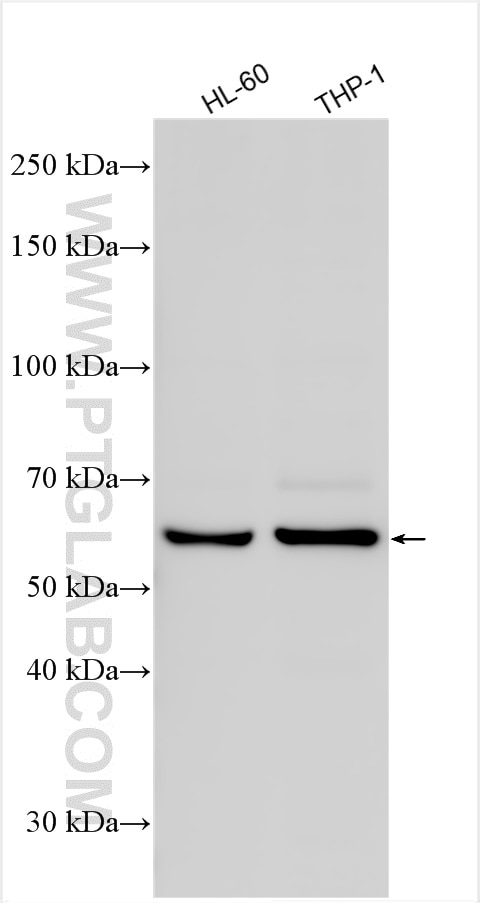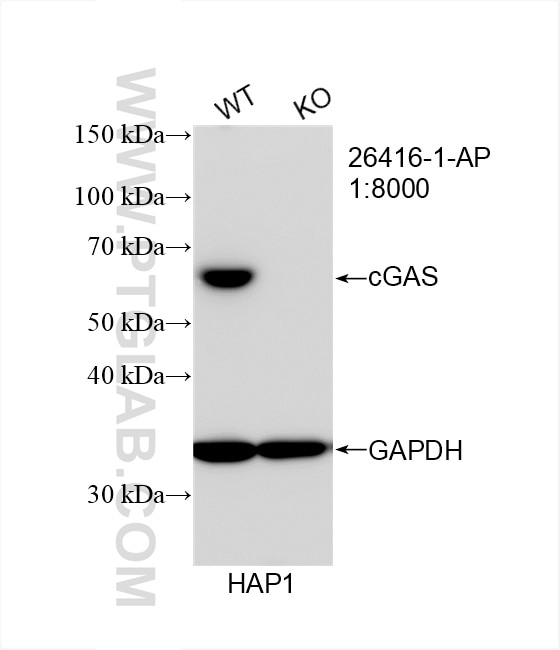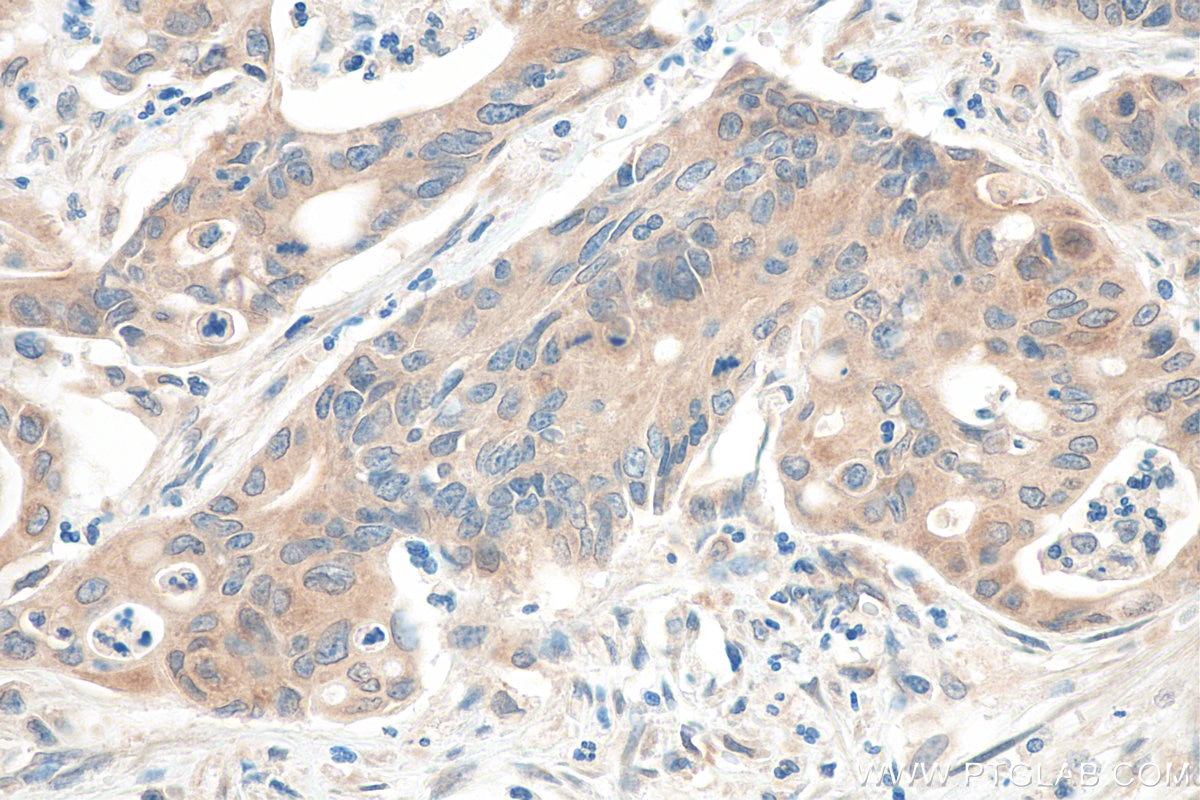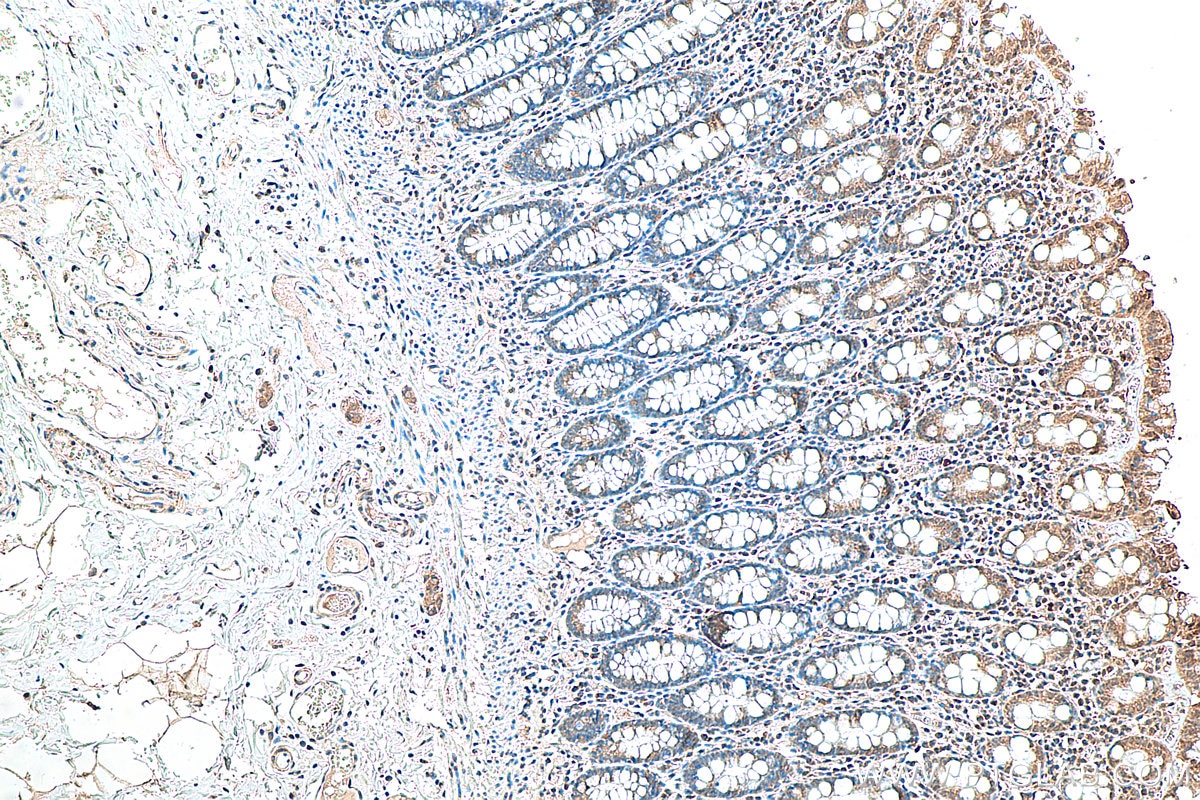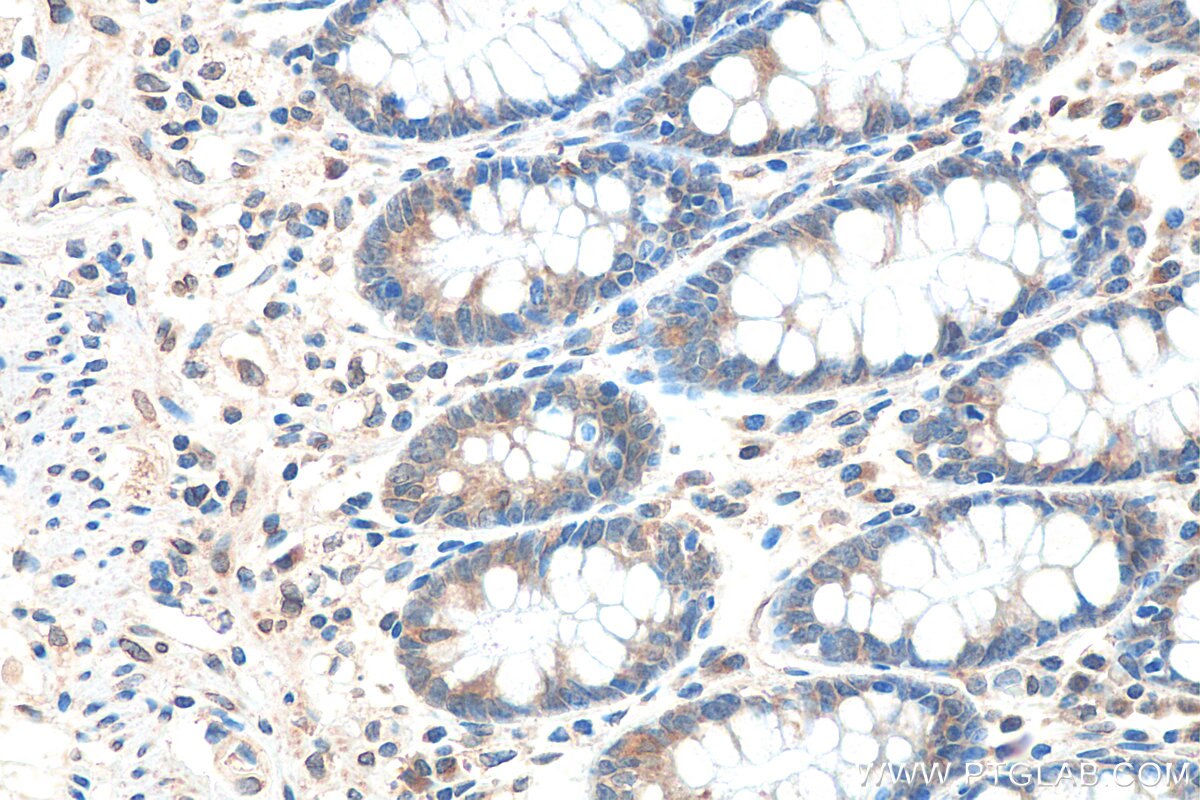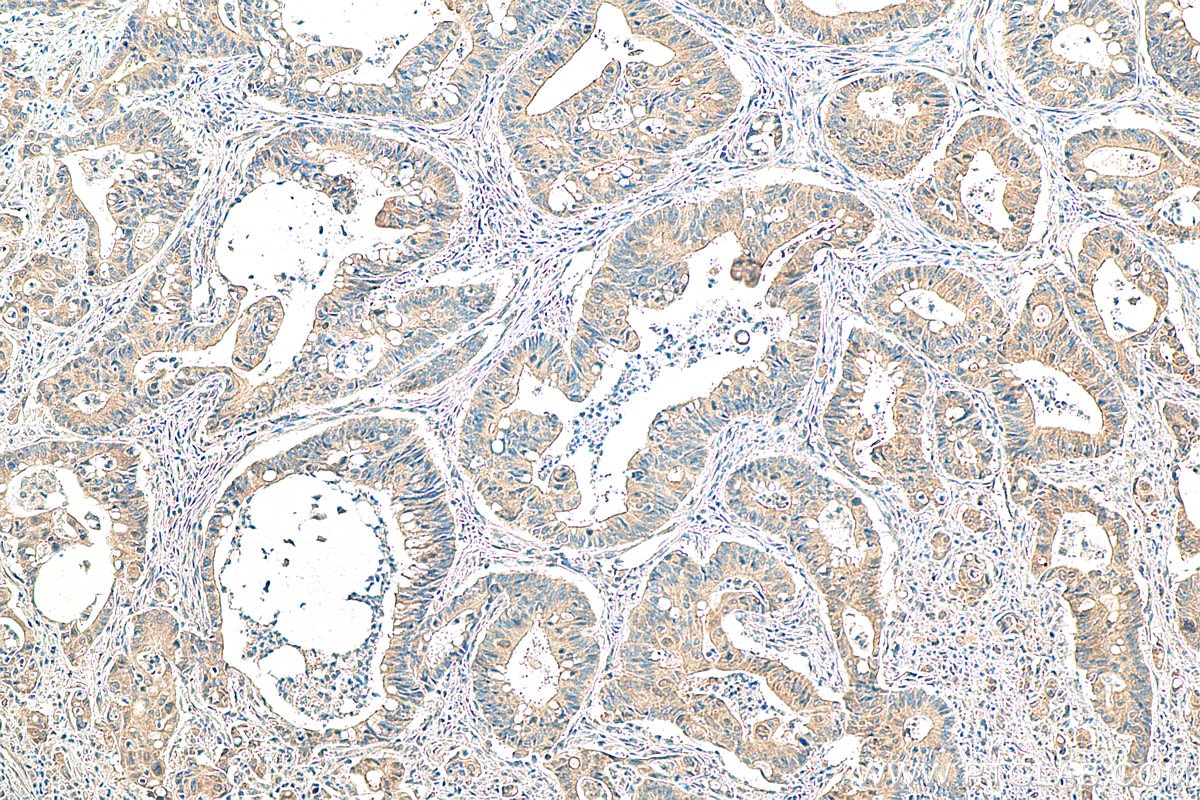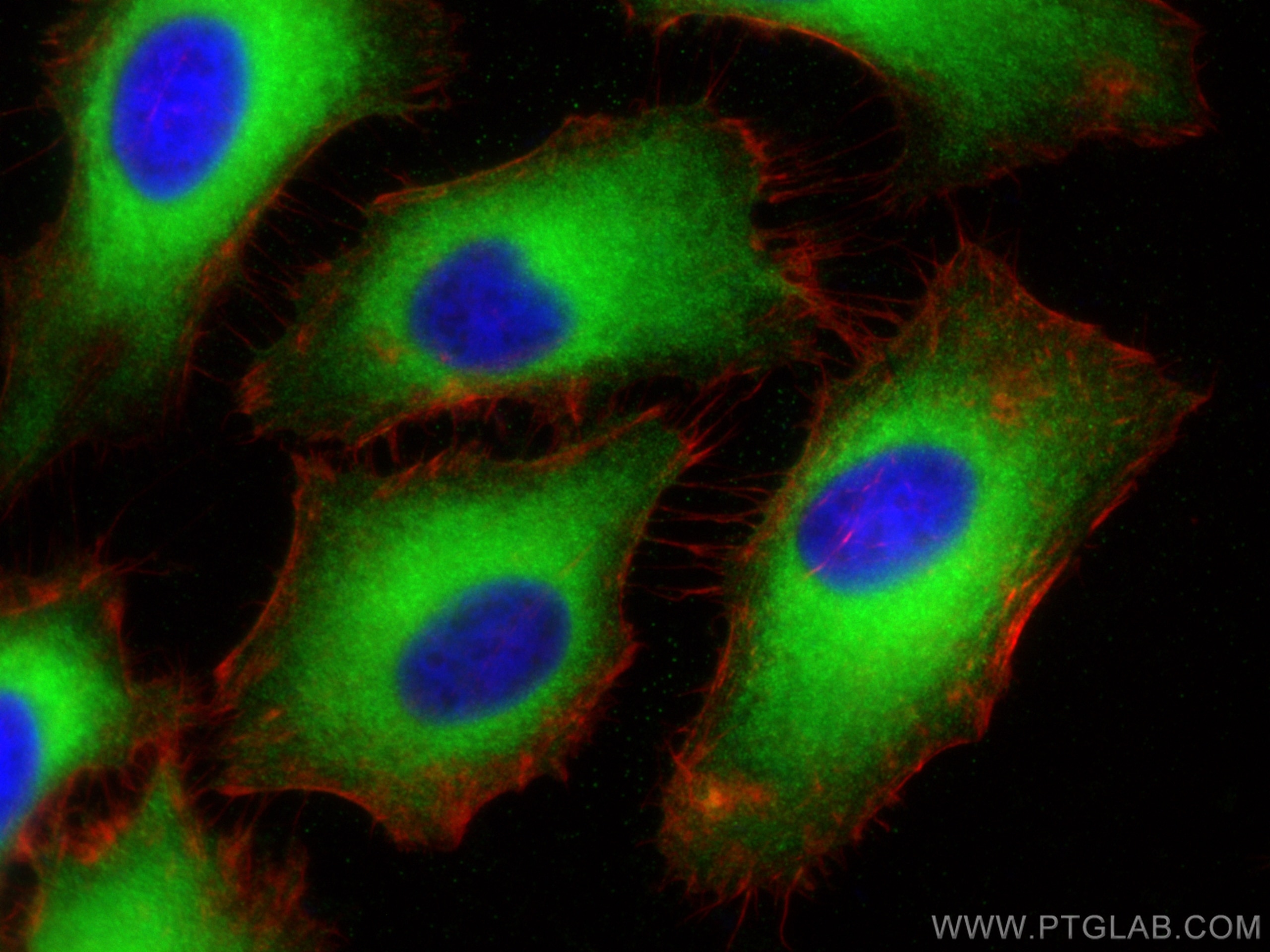Validation Data Gallery
Tested Applications
| Positive WB detected in | HL-60 cells, HAP1 cells, THP-1 cells |
| Positive IHC detected in | human colon cancer tissue, human colon tissue Note: suggested antigen retrieval with TE buffer pH 9.0; (*) Alternatively, antigen retrieval may be performed with citrate buffer pH 6.0 |
| Positive IF/ICC detected in | HeLa cells |
Recommended dilution
| Application | Dilution |
|---|---|
| Western Blot (WB) | WB : 1:40000-1:80000 |
| Immunohistochemistry (IHC) | IHC : 1:400-1:1600 |
| Immunofluorescence (IF)/ICC | IF/ICC : 1:200-1:800 |
| It is recommended that this reagent should be titrated in each testing system to obtain optimal results. | |
| Sample-dependent, Check data in validation data gallery. | |
Published Applications
| KD/KO | See 11 publications below |
| WB | See 92 publications below |
| IHC | See 16 publications below |
| IF | See 32 publications below |
| IP | See 3 publications below |
Product Information
26416-1-AP targets cGAS in WB, IHC, IF/ICC, IP, ELISA applications and shows reactivity with human samples.
| Tested Reactivity | human |
| Cited Reactivity | human, rat, pig, bovine, hamster |
| Host / Isotype | Rabbit / IgG |
| Class | Polyclonal |
| Type | Antibody |
| Immunogen |
CatNo: Ag23455 Product name: Recombinant human C6orf150 protein Source: e coli.-derived, PET30a Tag: 6*His Domain: 1-233 aa of BC113608 Sequence: MQPWHGKAMQRASEAGATAPKASARNARGAPMDPNESPAAPEAALPKAGKFGPARKSGSRQKKSAPDTQERPPVRATGARAKKAPQRAQDTQPSDATSAPGAEGLEPPAAREPALSRAGSCRQRGARCSTKPRPPPGPWDVPSPGLPVSAPILVRRDAAPGASKLRAVLEKLKLSRDDISTAAGMVKGVVDHLLLRLKCDSAFRGVGLLNTGSYYEHVKISAPNEFDVMFKLE 相同性解析による交差性が予測される生物種 |
| Full Name | chromosome 6 open reading frame 150 |
| Calculated molecular weight | 496 aa, 54 kDa |
| Observed molecular weight | 58 kDa |
| GenBank accession number | BC113608 |
| Gene Symbol | cGAS |
| Gene ID (NCBI) | 115004 |
| RRID | AB_2880507 |
| Conjugate | Unconjugated |
| Form | |
| Form | Liquid |
| Purification Method | Antigen affinity purification |
| UNIPROT ID | Q8N884 |
| Storage Buffer | PBS with 0.02% sodium azide and 50% glycerol{{ptg:BufferTemp}}7.3 |
| Storage Conditions | Store at -20°C. Stable for one year after shipment. Aliquoting is unnecessary for -20oC storage. |
Background Information
cGAS (Cyclic GMP-AMP synthase), also known as C6orf150 or h-cGAS, is a 522 aa protein. cGAS mediates innate immune responses against invading pathogens, or against self-dsDNA, which causes autoimmune disorders. The cGAS sensor not only recognizes cytosolic dsDNA but also synthesizes the second messenger cGAMP from ATP and GTP, which then binds to and activates STING. STING undergoes conformational changes and translocation from the endoplasmic reticulum to the Golgi apparatus to encounter TBK1 and IRF3, eventually triggering the production of type I IFNs.
Protocols
| Product Specific Protocols | |
|---|---|
| IF protocol for cGAS antibody 26416-1-AP | Download protocol |
| IHC protocol for cGAS antibody 26416-1-AP | Download protocol |
| WB protocol for cGAS antibody 26416-1-AP | Download protocol |
| Standard Protocols | |
|---|---|
| Click here to view our Standard Protocols |
Publications
| Species | Application | Title |
|---|---|---|
Signal Transduct Target Ther TRAF3 activates STING-mediated suppression of EV-A71 and target of viral evasion | ||
Cell Poxviruses Evade Cytosolic Sensing through Disruption of an mTORC1-mTORC2 Regulatory Circuit. | ||
Adv Sci (Weinh) PICH Supports Embryonic Hematopoiesis by Suppressing a cGAS-STING-Mediated Interferon Response. | ||
Nat Commun ARF1 prevents aberrant type I interferon induction by regulating STING activation and recycling | ||
Mol Cell CPT1A induction following epigenetic perturbation promotes MAVS palmitoylation and activation to potentiate antitumor immunity
| ||
J Hazard Mater GRP78/IRE1 and cGAS/STING pathway crosstalk through CHOP facilitates iodoacetic acid-mediated testosterone decline |

